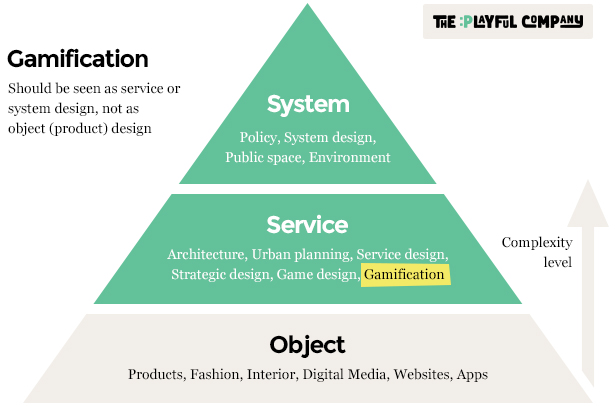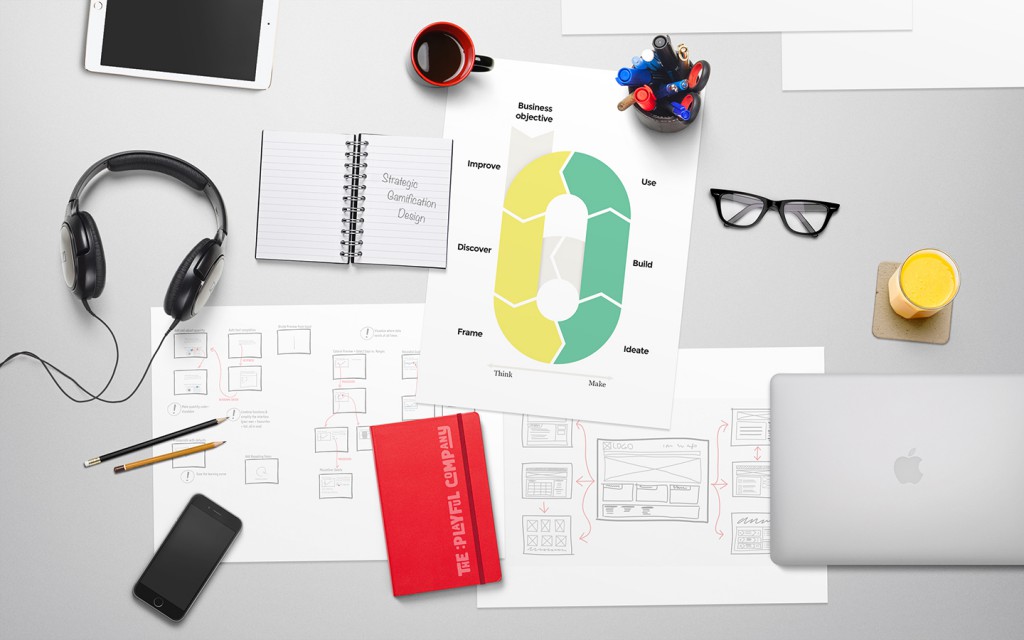As the subtitle of my blog being ‘Behind the scenes’ I will be giving more insight in my ideas on gamification and experience design. This site will be more than showing some of my inspiring projects and truly share my insights and beliefs towards gamification design.
It is because I feel this is needed. When visiting conferences, talking to others and seeing examples on the web, still too much gamification design focuses on the elements instead of the core activity. Too much is designed around business goals, instead of human beliefs.
In order to generate more great gamification examples, we should be looking at and borrow from other industries. Because that is what gamification is, a mixture of ideas and methodologies from well-known industries such as interaction design, psychology and game design.
As a graduate from the Technical University in Delft, I was taught Design Thinking; a user-centred methodology to design products people love to use. I get a lot of inspiration from Design Thinking as a methodology when designing gamification solutions. And even more because this theory has already found a place within business. Something gamification is still struggling with.
The complexity diagram
A while back I ran into this complexity diagram on a design thinking blog. It was ment to explain the position of design thinking, but is in my opinion also very applicable to gamification design. For me it explains what position gamification should have on the complexity ladder.
The complexity diagram (modified by me) can be split up into three categories (from less complex to more complex) object, service and system. Objects are those things, often tangible, which are the most easy to design. There is a brief explaining what the client needs and there are requirements. After designing, the design itself can be tested to those requirements. Services are harder to design, requirements are often vague and solutions tend to be intangible. Requirements are hard to test, often only on the long-term. Systems are the most complex. There are many parties involved when designing them and often solutions are ment conceptual rather than physical. A good read on systems, what they are, differences between open and close systems and how gamification can work within those systems can be found here.
An example to explain system, service and object is respectively the phone network (as well the physical component as the effect of mass communication), being able to make a call and the telephone itself. There is a dependency from one level to the other. A system often consists of multiple services and a service of multiple objects.

This complexity diagram explains today’s problem with gamified solutions very well. Gamification design is too often done at the object level. When designing gamification solutions designers tend to think in objects, resulting in solutions with game mechanics, but missing the true coherence between these elements.
Therefore I think gamification should be seen as a service or system. Gamification design is more complex than object (product) design. There are often vague requirements (“I want my users to be more environment-friendly.”) and solutions tend to be intangible.
We should start to think as service or system designers
So why intangible? Often gamification products are apps or software, which can be seen as tangible. Lines of code can be seen as an object. Before writing these lines of code there were specific requirements and the software can be tested to these requirements.
Yes, this is all true, but these apps and software should be seen as part of something bigger. This bigger being a service or system. And that is what we as gamification designers should design. Where object design designs a product, service or system design designs a series of interactions with a product. As gamification designers we are actually designing these interactions.
I am not saying that service or system design equals gamification design. What I am saying is that as gamification designers we need to take a system design approach. As well as with services or systems, we are designing multiple interactions which happen over time. And designing those interactions over time is really complex.
When looking at products, a certain interaction with that product doesn’t change much over time (the ability of sitting on a chair won’t change over time). But interactions with services or systems do change over time. This means that when designing gamified solutions it is extremely important to get a good sense of what the user wants and needs when first using your product and when this user has been using your product for a while. The user will change (improved skills or knowledge) and as designers we should think how that will affect the gamified solution.
It is clear that this ‘new’ form of gamification design approach requires a user-centred approach and that we really need to be aware of the user’s change of needs over time. Plain game mechanic design is easy, but doing good gamification design is hard.



